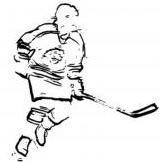Slate
Blackcurrant
Watermelon
Strawberry
Orange
Banana
Apple
Emerald
Chocolate
Marble
Slate
Blackcurrant
Watermelon
Strawberry
Orange
Banana
Apple
Emerald
Chocolate
Marble
-
Content Count
334 -
Joined
-
Last visited
-
Days Won
7 -
Feedback
0%
YesLanges last won the day on April 20 2024
YesLanges had the most liked content!
Community Reputation
128 ExcellentAbout YesLanges
- Birthday 08/09/1961
Equipment
-
Skates
Take a wild guess
-
Hockey Bag
CCM 32" and Larger Generic Duffle Bag
-
Shin Pads
Jofa 5500s
-
Elbow Pads
Jofa 9144s, 8066s, and 8044s
-
Shoulder Pads
Bauer 600s with shoulder caps and biceps pads swapped from Jofa 8400s
-
Pants
Cooper HP-18s circa 1978 and CCM Supra 610s & 630s circa 1990
-
Helmet
CCM Pro Standards circa Late 70s
-
Gloves
Cooper Pro circa 1975 & CCM 5-Roll HG135S circa 1985
-
Stick
CCM-RBZ Stage 2 Hossa P40, H11, or Zlobin Pattern
Profile Information
-
Spambot control
123123123
-
Interests
Physical Fitness, Thinking, Animals, and Strippers...not necessarily in that order.
-
Location
NYC
-
Gender
Male
Contact Methods
-
Website URL
NYCFreelanceWriter.com
-
That's a ton of money for a sleeve. Unless you specifically have issues known to be caused by loose tracking of your patella, you really don't need anything with that center donut to stabilize the patella. Otherwise, you really don't want anything that could alter or impinge on your normal patella tracking at all, because that can cause problems by itself. I just use McDavid 510s, which you can find on eBay or Amazon for as low as $20 or $30/pair.
-
That copper shit is a complete gimmick, which is why they had to change their whole ad campaign from claiming that copper had some kind of therapeutic effect to promoting the copper as something that supposedly extends their usable lives and reduces odor, after they were sued by the FTC for false advertising and had to pay a settlement for it. https://www.ftc.gov/system/files/documents/cases/151201tommiecoppercmpt.pdf Braces with semi-rigid or rigid hinged supports running down the sides can provide a little protection against injuries to the lateral and medial ligaments, but it's almost impossible to externally support either of the internal cruciate ligaments, because you can't counter rotational forces on knees with external bracing, except (maybe) by using those very expensive, super-heavy-duty custom-made "Lenox Hill"-style braces, first introduced about 50 years ago. Even those hinged rigid lateral/medial supports that can provide some protection for the MCL and LCL against lateral forces have significant tradeoffs, which is why they scrapped them in the NFL after initially providing them to almost all linemen for a few seasons in the late 80s or early 90s. They found out that they changed the anatomical forces on knees in ways that actually increased ACL tears, as a result. There's no such thing as any brace that can do anything for arthritic pain, except through mechanism #2 below: Simple compression sleeves (which I also wear on the ice and while training legs) do provide some relief (even for arthritic knees, like mine), by virtue of (1) temporarily raising the local tissue temperature and increasing blood flow, and (2) proprioception, in ways that reduce pain perception, indirectly, simply by stimulating distracting sensation in other nearby nerves. If you use them that way, it's best to put them on a little while before you get dressed, so your knees are nice and warm by then. I usually slide mine on before I make the drive to the rink.
-
It might not be suitable for full-time use, but a couple of times, I've had teammates coming back from broken or badly bruised ribs. I gave them some thigh inserts salvaged from old pants that they held in place with compression shirts. Those contoured thigh pads actually conform perfectly to your ribs and don't get in the way of anything. They're also much more protective than any padded shirt.
-
It's not your calves; it's their antagonists on the front of your shins; so stretching your calves while it's happening is the opposite of what you want to do. I had the same problem when I came back to skating after a 24-year layoff, but in my case, it was more the horrible cramps at night. It's probably either just those long-dormant muscles working against the stiffness of the boot whenever you flex your foot upwards or lateral tibialis compartment syndrome, which involves the same muscles getting too pumped up for the amount of room available within the surrounding facia enclosing them, which is really only treatable with minor surgery to open up that sheath of facia to reduce the internal pressure. If you never had that pain before, chances are it's just the former and will resolve after you get used to skating again. Stretching does help, but unlike calves, those muscles are very difficult to stretch, which is why you can't really stop them when they cramp up at night the way you can stop calf cramps by just lifting your foot up or stretching it on a step or against the floor. Calf sleeves seem to help a bit, but the best intervention that I've found is rubbing on some mineral oil before and after skating. https://www.sportsinjuryclinic.net/sport-injuries/lower-leg/calf-pain/lateral-compartment-syndrome
-
That's exactly what I wear. It was made by Cooper and called a Protec (or Pro Tec) cage. They actually came with a trapezoidal chin pad about the size of a credit card that clipped onto the bottom with snap buttons. Most guys removed them and just put enough tape on the bottom bar right under the chin and a little bit up on the bottom of the center vertical bar to make them about 1/4" thick. There's also at least 1 guy in Cooperalls in that clip.
-
The founder and owner died during Covid. His daughter took over operations for a while; but I just contacted her the other day about another job, and she responded that they were suspending work on player gloves. The last time I checked the website, it said they were closed permanently. I'm currently looking for another shop to repalm and cut the cuffs down on another vintage pair that I recently acquired. Those are my gloves that they had up on their photo page of customized gloves.
-
Thanks, Clarkie. I understand that and I already indicated that I don't use my MBs for core training or to "challenge" my skating muscles. I use them simply to practice the exact same types of drills on dry land that I do on the ice at sticks-and-puck sessions, stickhandling and toe-dragging through pylons, etc. I do all of my strength training in the gym and am not really looking to optimize my core/strength training for skating. That's why, for my purposes, I suspect that I'm going to like doing my standard pylon drills on R1s better than on my O1s, for the exact same reason that competitive inline players prefer R1s: I'm just looking to "perform" my on-ice drills as well on wheels as I perform them on the ice, not to add any additional challenge to my ability to do so. So, what I was actually asking is why I wouldn't prefer R1s to O1s, if all I want to do is duplicate my on-ice drill performance on wheels. My new R1 setup is ready to go; now, I'm just waiting for my building to open my skating area back up as soon as we remove some construction scaffolding that we have up right now for some work on the building.
-
I don't think any of this applies to anybody who skates both on ice and on wheels regularly. Even if you skate on a traditional chassis, if you don't stop skating on ice, you can always switch back and forth between the two without any problems. I believe the question only applies to going back to ice after a layoff during which you only skate on wheels. In my case, I was shocked at how foreign ice felt after skating on MBs during the Covid layoff, because I'd expected to retain much more muscle memory from the MBs. I skated better my first day back on ice after 5 months of not skating at all after an injury a couple of years before Covid. During Covid, I actually felt like I'd found my "edges" on MBs compared to the months when I was on my 20-year-old roller chassis setup; so, it was really surprising to get back on the ice for the first time and feel so uncomfortable.
-
Thanks. I wouldn't consider my skills "mad" by any stretch: I got a drill, pliers, metal snippers, files, c-clamps, glues and solvents, and a few different hacksaws; but I use a couple of "Champion" Swiss Army Knives more than anything else. It's much more about just having some version of almost everything and creativity for re-purposing shit. I'm a little OCD about never throwing out anything that "could" conceivably be useful "someday" for "something." About the only way I'm comfortable getting rid of anything is finding another home for it, like a goddamned cat hoarder, only for old hockey shit. Some of my best ideas required no actual work, at all: Those soccer shin guards make incredibly good outside/inside lower leg supplemental protection for goalies (and shot-blocking skaters); and two different teammates weren't going to play at all because of broken ribs (at different times) that were still healing until I dug up some thigh-pad inserts from an old pair of pants whose contours fit rib cages so perfectly they couldn't feel a not-that-soft hook right to the ribs with one of them stuffed under a compression shirt...and those smaller side thigh pant pads under compression shorts make awesome inner thigh guards for goalies.
-
I maintain a huge "stock" of all types of padding and all sorts of other shit salvaged from old equipment and routinely come up with DIY solutions for teammates (and opponents in my league) with injuries, especially those resulting from vulnerable areas in their gear. Pretty much every goalie I've played with and against in the last 8 years is wearing something I created, most recently, supplemental L-shaped internal padding for the thumb and forefinger for one whose catching glove hand I dinged through his glove and another whose $700 OTNY cage attachment I broke when it popped the whole screw/nut assembly through the mask shell one month after the warranty expired. For him, I made a larger padded steel grommet that salvaged the whole mask. So I immediately made a pair of these for myself back when this thread first came up and can definitely vouch for the concept. Filling in that space above my toes immediately made my skates feel more like part of my foot and improved my cross-unders and toe flick; and I've glued them into every pair of my skates. If I didn't happen to have a ton of various equipment materials just waiting to be made into something exactly like this, I'd have bought a pair of these immediately.
-
I guess I'm just having a hard time accepting that R1s are better for competitive roller hockey but not better for typical ice hockey drills on wheels. If they're more manueverable and allow sharper turns (yada yada) in roller hockey, I figure they're also going to be more maneuverable and allow sharper turns doing standard ice hockey drills on wheels. (And I understand that better stopping is an R1 benefit lost on me, since I don't play.) Also, I never really opened the bolt on my O1s very much, because I didn't like the instability. During the Pandemic,I just skated on wheels because there was no ice (obviously); but I wasn't looking to "challenge" my muscles or turn it into a training activity, except for the training inherent in whatever drills I was doing on concrete. I already (weight) train legs every 4 or 5 days; so, I'm not looking to turn skating into another leg workout, except (again) for the leg workout inherent in (sometimes) skating hard. (I did experiment with more open bolts on the O1s, by gradually opening them a little more about every other time that I skated. I found that if I opened them more than a relatively small amount, whatever benefit I got was outweighed by the decreased stability. After I went 6+ months not using them, I tightened the bolts almost all the way to transition back to them; but I ended up just leaving them only slighty open ever since. Incidentally, and weirdly, when I stepped back onto ice after 6 or 8 months of 2020 on the 01s, I had no edges at all and anything but a smooth transition back to ice...couldn't do anything. It was almost worse than not skating at all during tha time; and by then, I'd gotten pretty comfortable on my MB "edges" and was skating well on them. It took 2 or 3 times back on ice to get back to normal, but I was kind of expecting to step right back onto ice and skate normally. Do you think it's a mistake and that R1s won't be as good for off-ice drills? Can you explain to me what the difference is between the inserts, from experience (not from their "official" descriptions). I normally skate on a dual 8'/13' profile. Any thoughts on which insert might be best to try first?
-
I just purchased R1s. I don't play roller hockey at all, but I'd like to skate on wheels as closely as possible to exactly the way I skate on ice. I'm confused by their description of one insert as being "most like ice" and another as providing the "smoothest" heel-toe transitions and maximum control. To me, those are somewhat synonymous, so I'm confused by that. Obviously, I skate much better on ice, because of thousands of hours on ice skates vs. < 50 hours on wheels in my life, mostly on O1s during the Pandemic. If my goal is simply to set up the same hockey drills on concrete that I typically use on the ice, which inserts will probably allow me to skate most proficiently on concrete the first time that I try out my new R1s? Thanks in advance for any input; I appreciate it.
-
I think I'd be less concerned with them withstanding direct puck impacts than with stick blades squeezing through areas that even cateye cages don't allow (in addition to all of the same areas where cateye cages are vulnerable to stick blades). At least with cateyes, any stick that gets through will come right out the same way. With high-tensile-strength cable, if a stick manages to squeeze through by deforming the cables under a high enough force to get through, that blade will be stuck right there and won't even be able to be removed from an eye socket or flesh by just pulling it back out. It's easy enough to snip the cables once the trainer gets out there; but by that time, the player holding the stick might do much more damage to the goalie's face, first, by reflexively trying to pull it back out during play before everyone realizes it's stuck in the goalie's face and being held there by those high-tensile cables.
-
I've been using their 8'/13' combo and FBV 95/1 for years, but just tried 98/50 for the first time and am going to be switching to that from now on.






